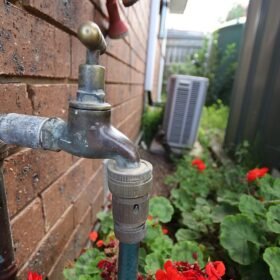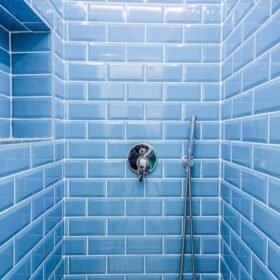Gardening enthusiasts understand the significance of healthy soil for the growth and vitality of plants. One essential aspect of soil health is its drainage capability. Adequate soil drainage allows excess water to escape, preventing waterlogging and providing plants with the optimal conditions they need to thrive. In this article, we will explore the importance of garden soil drainage, identify signs of poor drainage, discuss factors that affect it, and provide practical methods to improve it.
Introduction
When it comes to successful gardening, soil drainage plays a vital role. Proper drainage ensures that excess water doesn’t accumulate around plant roots, causing rot, suffocation, and other adverse effects. By enhancing garden soil drainage, you can create an environment that promotes healthy root development, nutrient absorption, and overall plant growth.
Importance of Garden Soil Drainage
Good drainage is crucial for several reasons. Firstly, it prevents waterlogging, which can lead to root rot and the eventual death of plants. Additionally, well-drained soil allows for the efficient utilization of nutrients by plant roots, as excessive moisture can hinder nutrient uptake. Furthermore, proper drainage facilitates aeration, enabling the roots to access oxygen, which is essential for their respiration.
Signs of Poor Drainage in Garden Soil

Recognizing signs of inadequate drainage in your garden soil is essential to address the issue promptly. Some common indications of poor drainage include:
Water pooling:
If you notice water accumulating in specific areas of your garden after rainfall or irrigation, it’s a clear sign of poor drainage.
Slow water absorption:
If water takes a long time to soak into the soil, it suggests that the soil has a low drainage capacity.
Plant wilting:
Overly saturated soil can cause plants to wilt, even if they have received sufficient water.
Foul odors:
Soil that emits unpleasant odors, especially after rainfall, can indicate poor drainage, as stagnant water promotes the growth of anaerobic bacteria.
Factors Affecting Garden Soil Drainage
Several factors influence soil drainage:
Soil composition: Different types of soil have varying drainage properties. Sandy soils tend to drain quickly, while clay soils have slower drainage due to their fine particles.
Soil structure: Well-structured soil with a balanced combination of sand, silt, and clay particles allows for better drainage.
Topography:
The slope or grade of your garden can affect drainage. If the land is relatively flat or has depressions, water may collect and result in poor drainage.
Compaction:
Soil compaction restricts the movement of water, resulting in poor drainage. Compaction can occur due to foot traffic, heavy machinery, or improper cultivation practices.
Organic matter:
The presence of organic matter in soil improves its structure, porosity, and drainage capabilities.
Methods to Improve Garden Soil Drainage
Fortunately, there are several effective techniques to improve garden soil drainage:
1. Testing Soil Drainage
Before implementing any corrective measures, it is essential to assess the existing drainage conditions in your garden. You can conduct a simple soil drainage test by digging a hole about a foot deep and filling it with water. Observe how quickly the water drains. If it takes more than a few hours for the water to completely drain, it indicates poor drainage.
2. Adding Organic Matter
One effective way to enhance soil drainage is by incorporating organic matter. Organic matter, such as compost, well-rotted manure, or leaf mold, improves soil structure, allowing for better water infiltration and drainage. Spread a layer of organic matter over the garden soil and work it in using a garden fork or tiller. This will help break up compacted soil, increase pore space, and promote drainage.
3. Installing Drainage Systems
In cases where poor drainage persists despite soil amendments, installing a drainage system can be a viable solution. French drains, for example, consist of perforated pipes buried underground to redirect excess water away from the garden. These pipes are surrounded by gravel or crushed stone to facilitate water flow. Consult a professional landscaper or drainage specialist for assistance in designing and installing an effective drainage system.
4. Creating Raised Beds
Another strategy to improve soil drainage is by creating raised beds. Raised beds elevate the planting area, allowing excess water to drain more effectively. Construct raised beds using untreated lumber, bricks, or stone, and fill them with well-draining soil mixtures. Raised beds not only enhance drainage but also provide better control over soil quality and prevent soil compaction.
5. Mulching and Using Cover Crops
Applying mulch to your garden beds offers numerous benefits, including improved soil drainage. Mulch helps regulate soil moisture by reducing evaporation and preventing water runoff. Additionally, it moderates soil temperature and suppresses weed growth. Organic mulch, such as wood chips or straw, is highly recommended. Additionally, consider incorporating cover crops like clover or buckwheat, which help break up compacted soil and enhance drainage through their root systems.
6. Avoiding Overwatering
Overwatering is a common mistake that can lead to poor soil drainage. Many plants, especially established ones, prefer slightly drier conditions rather than constantly saturated soil. Water your garden thoroughly but less frequently, allowing the top few inches of soil to dry out between watering sessions. Adjust your watering schedule based on the specific needs of your plants, taking into account factors such as weather conditions and plant species.
7. Using Compost
Introducing compost into your garden is an excellent practice for improving soil fertility and drainage. Compost enhances soil structure, increases its water-holding capacity, and promotes beneficial microbial activity. Regularly add compost to your garden beds by incorporating it into the top few inches of soil. This will gradually improve drainage and create a nutrient-rich environment for your plants.
Conclusion
Proper garden soil drainage is essential for healthy plant growth and vitality. By understanding the signs of poor drainage and implementing effective techniques, you can create an optimal environment for your garden. Test soil drainage, add organic matter, consider installing drainage systems or raised beds, use mulch and cover crops, avoid overwatering, and incorporate compost. With these strategies, you can enhance soil drainage and provide your plants with the best conditions to thrive.
FAQs
Q1. How can I tell if my garden soil has poor drainage?
A. Signs of poor drainage include water pooling in certain areas, slow water absorption, plant wilting despite sufficient water, and foul odors after rainfall.
Q2. What type of soil has good drainage?
A. Sandy soil tends to







